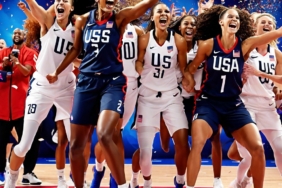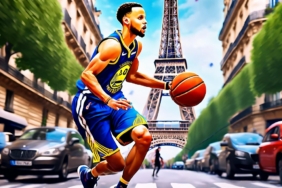Behind the Scenes of Olympic Coverage at The New York Times
In the summer of 2016, Derek Watkins, who was then serving as a graphics editor at The New York Times, faced a formidable challenge: how could the newspaper deliver timely and engaging coverage of Olympic events to its readers? To tackle this, Mr. Watkins and his fellow graphics editors devised a groundbreaking solution that would ultimately redefine their approach to sports journalism—miniature, animated representations of the competitions, crafted in mere minutes.
Since the 2016 Olympics, teams from Digital News Design, Graphics, and Research and Development have collaborated to create these innovative visualizations for various Olympic sports, including swimming, running, skiing, and figure skating. “The earliest versions resembled 2-D sprites,” remarked Eden Weingart, an art director on the Digital News Design team, reflecting on the humble beginnings of these simulations. Each subsequent Olympic Games has seen the team build upon that initial concept, enhancing the complexity and interactivity of their visualizations.
This year, the track and field as well as swimming visuals have gained significant traction on social media platforms like TikTok and Instagram. The tiny, now 3-D swimming avatars switch strokes seamlessly between laps during medley events, accompanied by exciting, video-game-like sound effects. In the track events, animated runners explode out of starting blocks, their arms pumping with determination, allowing viewers to pinpoint exactly when they surge ahead or fall behind. For instance, Noah Lyles’ victory in the 100-meter dash on Sunday, won by a mere five-thousandths of a second, was difficult to discern from standard television coverage. However, the Times’ visual representation showcased how Lyles, through his avatar, managed to out-lean his competitors at the very finish line.
Credit: Nick Bartzokas, Alice Fang, John Huang, and Eden Weingart / The New York Times
In a recent interview, Ms. Weingart delved into the most challenging aspects of creating these captivating visualizations and shared insights on what her team has in store for the future. Below are edited excerpts from the conversation.


















